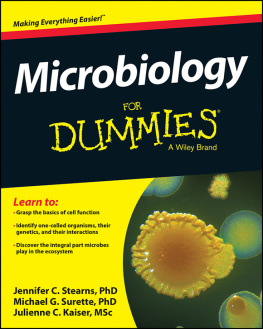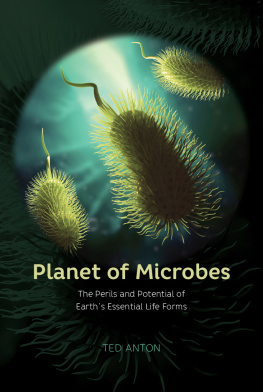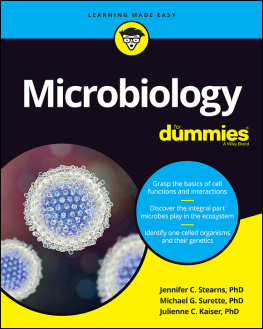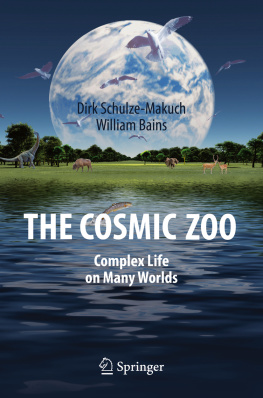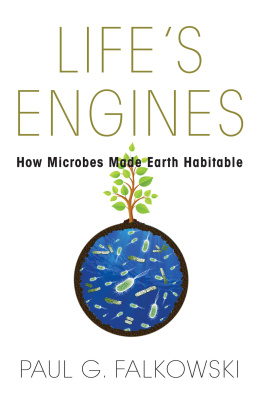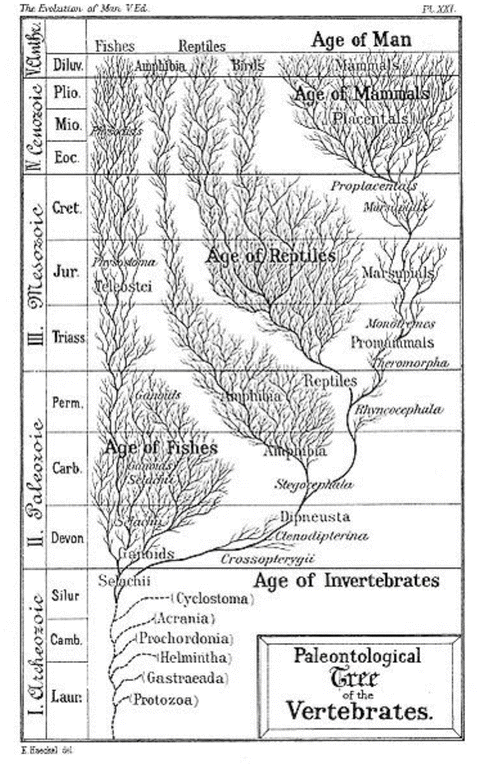Introduction
On the face of it what life is seems fairly obvious. If you think about humans, their pet animals or an animal on a farm, then you know that living things run around, breathe, are conscious (we like to think to varying extents) and are very much tangible things.
What about plants? Well, they dont move much at all; they arent warm and fluffy and they almost certainly dont think much. However, they are quite big, they grow and they reproduce when given the chance. Bacteria? Hmm, well, they reproduce but are very small. They dont breathe as far as we can see, but then again, neither do plants. Fungi? Well, aside from their popularity at parties, fungi spend most of their time looking like a mass of tendrils that extend through whatever substance they are growing on. Here, they secrete digestive juices to dissolve the material on which they are growing. They arent able to move; they dont think and dont appear to breathe. Yet, as far as we are concerned, they are alive.
How, then, do we define what a living thing is? Why is a cat alive, but a lump of granite not? Why is a Yersinia pestis bacterium living but not a crystal of sodium chloride?
Well, you might say living things are complicated, and non-living things are not. Certainly, a bacterium is made up of trillions of components, comprised of tens of thousands of enzymes, molecules of fat and carbohydrate, molecules called nucleic acids (which include DNA, or deoxyribonucleic acid) and quintillions of molecules of water and other simple substances. A rock, by contrast is made up of repeated crystals of silicates and other minerals. However, look more closely and things become more complex. Take granite. It contains quite a variety of minerals: four core silicatesquartz, alkali feldspar, an iron-containing mineral called amphibole and another called mica . These silicates contain silicon and oxygen, with a number of other elements, such as sodium, aluminum and potassium. Silicates are fairly large molecules containing hundreds to tens of thousands of atoms arranged in long chains, much like the molecules we associate with life. And, like the molecules of life, these reproduce by making copies of themselves.
What, then, separates bacteria from lumps of granite? This chapter explores the boundaries between what is alive and what is not. Hopefully, by the end of it, your idea that there is a sharp divide between the living and the non-living will have blurred somewhat. Youll then be on your way to discovering why life is so adept at surviving in such a wide variety of environments.
Beyond the Six Kingdoms
Biologists divide living things into six categories, known as kingdoms : Animalia (animals); plantae (plants); fungi (yeasts and mushrooms); protists (complex but single-celled organisms) and the bacteria. Until relatively recently these bacteria were a homogenous group of single-celled organisms that were utterly distinct from the other four groups but were otherwise viewed as rather similar.
In the 1970s Carl Woese challenged this assertion, basing his contention on the idea that the prevailing view of the bacterial world was flawed. Woese observed rather different kinds of chemistry in two distinct camps of single-celled bacterial life . Further analysis of the DNA of multitudes of these bacteria clearly vindicated Woeses view: the bacteriathose microscopic single-celled organismswere in fact two distinct kingdoms. In the end the distinction should have been relatively obvious. Woese had realized that those bacteria that lived in the worlds harshest environments were so different from their more commonplace counterparts that they really could not be one and the same kingdom. Thus the bacteria fall into two broad groups: the Archaea and the Prokaryotes .
In general the prokaryotes include those bacteria that we are most familiar withthose that inhabit our bodies, our immediate environment and most of the world around us. The Archaea , by contrast, occupy the worlds most challenging or peculiar environments, such as hot, acidic springs; alkaline lakes; the gastric chambers of cattle; or very saline environments, such as the Salton Sea. It may, therefore, be all the more surprising that the group of bacteria that is most closely related to us is the most peculiar. Figure illustrates this. Indeed, some recent analysis suggests that we eukaryotes may just be complicated archaea.
Fig. 1.1
This lovely reproduction of German biologist Ernst Haeckels Tree of Life was produced in 1879. It graphically illustrates how living organisms originate from smaller branches that ultimately converge in a single trunk
In terms of their underlying biology, all living things on Earth share common features. They all have DNA as their genetic material. This is their genome. They all use proteins to form their internal and external structures and carry out the bulk of the chemical processing that cells need to keep themselves intact and productive. Cells also use RNA for a limited but critical repertoire of core chemical reactions, such as the synthesis of proteins and to convey information from DNA to protein.
Beyond this are the viruses, which you may or may not decide qualify as living things. For now, we can regard them as a seventh domain in biology, one populated by a very diverse group of entities that parasitize cells and are otherwise unable to reproduce without the help of the cells they infect. Viruses may have a genome made of DNA or RNA , and some like to use both, depending on which stage of their life cycle you are looking at. Many viruses are really rather complex. The T-even phages have relatively few genes, but structurally would not seem out of place as NASA spacecraft. Others, such as the Pox viruses , have a fairly simple structure, but have genes that number close to or greater than those found in simple bacteria. Thus, the lines are a little blurred between bacteria and viruses, even at this point.
Does this help us answer the question of what constitutes life? Well, no. The more you look the muddier the waters become. If, however, we restrict our thoughts to those organisms that are cellularthat is, made up of one or more cells, then living things can be thought of as cellular structures that contain the information needed to sustain their own survival. This is a woolly explanation and is a serious attempt to avoid any conflict. Think of it, if you will, as a compromise between the contrasting behaviors of organisms such as plants and animals and the common, underlying physical structures that comprise them.
Would this cover all life in the universe, or even all life that has ever existed on Earth? Well, probably not. Think about it. With the exception of viruses, cells comprise distinct zones, even those we like to regard as primitive (the bacteria and archaea). The interior of the cell may be subdivided into compartments in all types of organism. But this is perhaps most obvious in the eukaryotes, which have clear sub-cellular compartments , each taking care of a different cellular function. However, the most obvious distinction between what is cell and what is not is provided by the outer cellular membrane, often called the plasma membrane. Wed happily state that the region outside of this divide is definitely not alive. However, inside, we would have no problem considering the region living.




